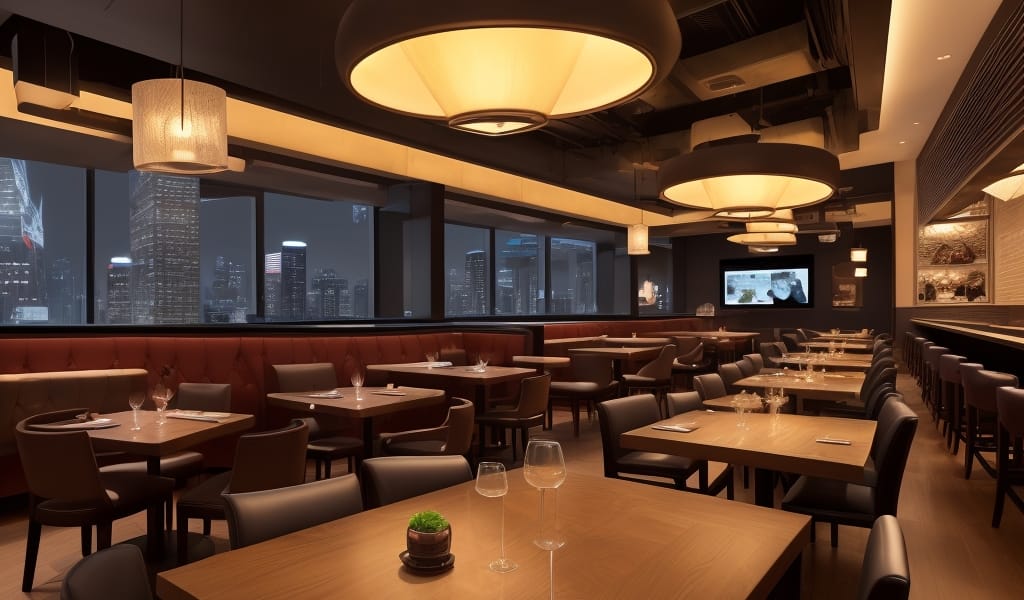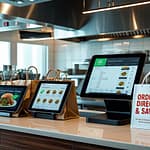Key Takeaways:
- Consider investing in a virtual kitchen as they represent a growing trend in the food industry.
- Explore cloud kitchen solutions to reduce overhead costs associated with traditional brick-and-mortar restaurants.
- Stay ahead of the curve by embracing the future of restaurants, which is likely to include a significant virtual component.
- Use virtual kitchens to expand your restaurant’s reach and serve a wider customer base without additional rent or staffing costs.
- Continually adapt to new food trends and customer preferences to ensure the success of your virtual restaurant.
The Rise of Virtual Restaurants: Fad or Future?
In recent years, the restaurant industry has witnessed a seismic shift with the emergence of virtual restaurants. Driven by evolving consumer preferences, technological advancements, and the necessity prompted by global events, virtual kitchens, also known as ghost kitchens or cloud kitchens, have quickly become a significant trend. But are these digital-first dining concepts merely passing fads, or do they represent the future of dining?
In this article, we’ll explore the growing popularity of virtual kitchens, examine their impact on traditional restaurants, and offer actionable insights for restaurant owners and managers who want to stay ahead in this rapidly changing landscape.
Understanding Virtual Restaurants and Their Appeal
What Exactly Are Virtual Kitchens?
Virtual kitchens, also known as cloud kitchens or ghost kitchens, operate exclusively through online food delivery platforms without physical dining spaces. Customers order online, and meals are prepared in dedicated kitchen facilities designed specifically for takeout and delivery. This model eliminates costly overhead expenses associated with dining areas, staff, and location rent, allowing owners to focus solely on food preparation and delivery efficiency.
Why Consumers Are Embracing the Cloud Kitchen Trend
The rise of food delivery apps, convenience-driven lifestyles, and the global pandemic have significantly accelerated consumer preference toward online ordering. Today’s diners are increasingly comfortable seeking high-quality, restaurant-prepared meals in the comfort of their homes.
- Convenience: Easy online ordering and rapid delivery appeal to consumers’ busy schedules.
- Variety: Virtual kitchens allow customers to explore diverse cuisines and concepts within a single order.
- Cost-effectiveness: Lower operational costs often translate to competitive pricing for consumers.
The Impact on Traditional Restaurants
Challenging the Status Quo
Traditional restaurants face significant pressure from virtual kitchen competitors. Brick-and-mortar establishments grapple with higher operational expenses, such as rental space, decor, front-of-house staffing, and maintenance costs. Virtual restaurants, however, streamline operations and overhead, allowing them to quickly adapt to changing trends and consumer preferences.
For traditional restaurants, the rise of cloud kitchens presents both challenges and opportunities. Owners must either adapt to the changing landscape or risk being left behind by more agile competitors.
Opportunities for Traditional Restaurants
Not all is doom and gloom for traditional dining establishments. Many restaurants have successfully incorporated elements of virtual kitchens into their business models, expanding their reach without additional physical locations.
- Additional Revenue Streams: Establishing a virtual brand alongside existing operations can attract new customer segments.
- Testing New Concepts: Launch new culinary ideas and menus with minimal financial risk through virtual concepts.
- Increased Market Reach: Expand delivery radius and customer base without heavy upfront investment.
Real-World Examples: Virtual Kitchen Success Stories
Reef Technology: Transforming Urban Dining
Reef Technology has successfully leveraged underutilized urban spaces, such as parking lots, into thriving ghost kitchens. By offering multiple dining concepts from a single location, Reef optimizes kitchen efficiency, reduces costs, and provides consumers with diverse dining options. Their rapid growth and strategic partnerships exemplify the scalability and flexibility of virtual restaurant models.
MrBeast Burger: Influencer-Driven Virtual Success
MrBeast Burger, spearheaded by popular YouTuber MrBeast, exemplifies how influencer marketing and virtual kitchens can combine for explosive success. Launching across hundreds of locations simultaneously, it generated massive attention and revenue without opening a single brick-and-mortar establishment. This demonstrates the potential reach and profitability virtual restaurants offer when combined with effective digital marketing strategies.
Actionable Advice for Restaurant Owners and Managers
Assess the Viability of a Cloud Kitchen Model
Before jumping into the virtual restaurant space, carefully evaluate the feasibility of adopting this model for your business. Consider factors like existing kitchen capacity, staff skillsets, local market demand, and potential delivery logistics.
- Analyze local competition to identify unmet culinary niches.
- Evaluate the capacity of your existing kitchen to handle additional virtual concepts.
- Assess staffing requirements and adjust accordingly to meet increased delivery demand.
Choose the Right Technology and Partners
Technology plays a crucial role in the success of cloud kitchens. Select reliable online ordering platforms, POS systems, and delivery service providers that seamlessly integrate with your operations.
- Partner with popular delivery apps to maximize visibility and customer reach.
- Invest in robust order management and kitchen display systems to improve operational efficiency.
- Leverage analytics tools to monitor sales data, customer preferences, and operational performance.
Craft Distinctive Digital Brands
With numerous virtual restaurants entering the market, differentiation becomes essential. Develop unique digital brands that resonate with target audiences, utilizing attractive visuals, compelling storytelling, and consistent online presence.
- Create visually appealing branding elements (logos, packaging, social media graphics).
- Maintain active social media profiles to engage customers and foster loyalty.
- Focus on high-quality food photography to enhance marketing efforts and customer perception.
Prioritize Quality and Consistency
Virtual kitchens heavily rely on repeat business and positive online reviews. Consistently delivering high-quality food and exceptional customer service is essential for long-term success.
- Develop clear kitchen protocols and standardized recipes to ensure consistent food quality.
- Implement rigorous quality control measures for delivery packaging and timing.
- Actively monitor customer reviews and feedback, promptly addressing any concerns.
The Future of Dining: Fad or Lasting Trend?
Considering the rapid growth and widespread adoption, virtual kitchens appear poised as a lasting innovation rather than a fleeting industry trend. The proven success of various models, from influencer-driven concepts like MrBeast Burger to multi-brand kitchens like Reef Technology, highlights the flexibility, scalability, and profitability potential inherent in virtual dining.
However, traditional restaurants still maintain significant value in providing in-person dining experiences, ambiance, and human connection that virtual kitchens cannot replicate. The future likely holds a hybrid market, with virtual and traditional restaurants coexisting and complementing each other.
Restaurant owners and managers who proactively embrace the cloud kitchen trend, carefully evaluate their operations, and leverage technology effectively will position themselves advantageously in this evolving landscape. Rather than viewing virtual restaurants as direct competition, consider them an opportunity to diversify, test new concepts, and attract broader customer bases.
Ultimately, the rise of virtual restaurants is neither entirely a fad nor a complete replacement for traditional dining. Instead, it’s a significant evolution in the restaurant industry’s ongoing transformation—a trend that savvy businesses can harness for sustainable success.






Comments
Be the first to comment on this article.